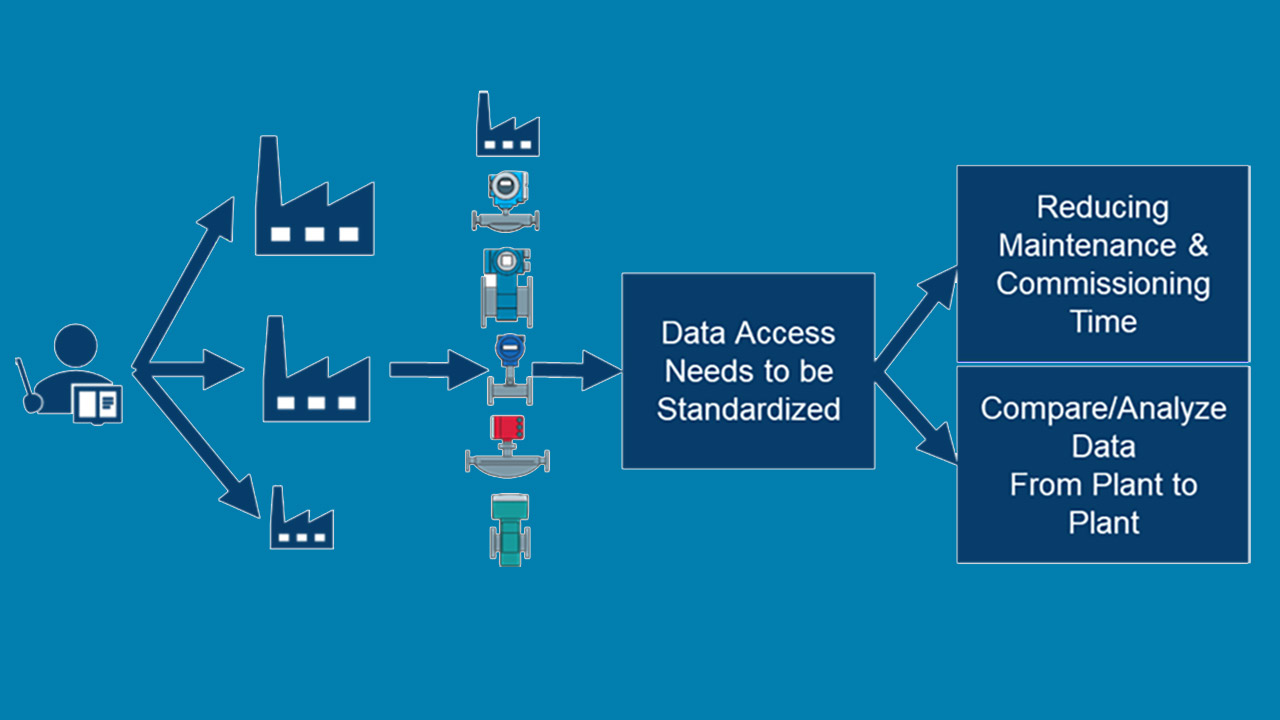Industry NewsMay 20, 2023
EtherNet/IP Process Device Profile Support

ODVA has announced that process device profiles have been added to the EtherNet/IP specification.
ODVA announced that process device profiles have been added to The EtherNet/IPTM Specification to provide automation practitioners with another critical tool to help optimize plant operations. Process device profiles provide a standard format for process variables and diagnostics across an array of devices for smoother vendor interoperability and easier DCS and PLC data integration from EtherNet/IP-enabled field devices. Device profiles are available for Coriolis flow, electromagnetic flow, vortex flow, standard pressure, and scaled pressure devices. Process end users can now take advantage of EtherNet/IP devices with better communication of critical diagnostics such as NAMUR NE 107 status signals, and improved alignment with the Process Automation Device Information Model (PA-DIM).
Process device profiles
EtherNet/IP process device profiles are made up of process measurement value objects for variables such as current pressure, level, flow, etc., process totalized value objects that track cumulative data totals such as total flow, and process device diagnostics objects that enable plant operators and maintenance personnel easier access to additional device and process status information. Process device profiles help convert sensor signals and actuator positions into valuable information that enables action to be taken to improve product quality and operational efficiency. Additionally, process device profiles can help evaluate the reliability of the measuring signal and aid in preventing plant shutdowns by identifying premature device failures. As an example, the process totalized value object can track total device usage and device health can be inferred from the process measurement value and diagnostics objects. This allows users to shift from time-based maintenance to condition-based maintenance, potentially saving devices from unnecessarily being replaced during plant shutdowns while identifying other devices that are failing prematurely, which can reduce both unnecessary maintenance costs and potential downtime.
The EtherNet/IP process device profiles were designed with additional parameters and modified data types to better align with PA-DIM, which is a joint standard between FieldComm Group, ISA100 WCI, NAMUR, ODVA, OPC Foundation, PI, VDMA, and ZVEI. PA-DIM represents information from process devices in a standardized way for easier access. In addition to exposing measurement values and the quality or status of those values, EtherNet/IP process device profiles can also simulate the measurement values. This enables critical safety functions such as partial stroke tests in valves to take place without interfering with the process data. The standard formatting of live process variables, data totals, and diagnostics that process device profiles provide will also increase vendor interoperability for end users given that the information will be the same across EtherNet/IP devices, regardless of vendor.
Process automation capabilities
The addition of process device profiles adds to the process automation capability of EtherNet/IP, including the ability to use the Ethernet-APL physical layer. Ethernet-APL unlocks the advantages of commercially based industrial control hardware, an object-oriented foundation, and standard internet protocol compatibility including TCP/IP, HTTP, FTP, SNMP, and DHCP in process plants. Ethernet-APL is a combination of Single Pair Ethernet (IEEE 802.3cg-2019, 10BASE-T1L), engineered power, Intrinsic Safety (IEC 60079, 2-WISE), and Type A fieldbus cable (IEC 61158-2, for intrinsic safety) that is able to reach 1,000 meter distances and speeds of 10Mbit/s. Additionally, EtherNet/IP supports process automation through NE 107 diagnostics, HART integration, and IO-Link integration. Further, ODVA is continuing to expand the EtherNet/IP ecosystem with the next generation of digitized device description files, including FDT, FDI, and xDS, to simplify integration into process asset management tools. Lastly, ODVA has also just released the availability of concurrent connections allowing for failsafe controller redundancy for the most critical of process applications.
“The introduction of process device profiles to EtherNet/IP is another critical step in meeting the full set of requirements of the process industries,” said Dr. Al Beydoun, President and Executive Director of ODVA. “EtherNet/IP process device profiles will help end users operate plants with superior yields, minimal downtime, and reduced costs. Additionally, better integration with PA-DIM will help process automation practitioners have the most valuable diagnostics and process variables available in both the control room and in the cloud to allow for enhanced insights and timely intervention measures for optimization of operations.”
EtherNet/IP process device profiles enable enhanced vendor interoperability, easier access to process variables and critical diagnostics such as NAMUR NE 107 status signals, and more seamless integration with PA-DIM. Additionally, process field device profiles will allow for simpler commissioning and enhanced asset monitoring and integration into higher level PLC, DCS, and cloud-based systems. Visit odva.org to obtain the latest version of The EtherNet/IP Specification including process devices profiles for EtherNet/IP.


